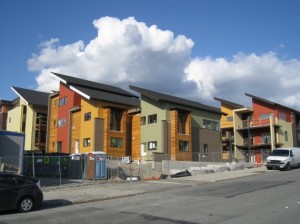 Although they’ve been in Wisconsin for over 80 years, Standard Process hasn’t been well-known until the last few years as people have become more concerned about health and nutrition.
Although they’ve been in Wisconsin for over 80 years, Standard Process hasn’t been well-known until the last few years as people have become more concerned about health and nutrition.
The 420-acre certified organic farm, located a mile or so from its headquarters in Palmyra, WI., grows whole foods for their high nutrient content – alfalfa, barley grass,oats, pea vine, buckwheat, Spanish black radish, kale, beets, radishes, Brussels sprouts – and processes them into nutritional supplements.
Organic growing methods include:
- All of the seeds are organic and always untreated and free of genetically modified organisms (GMO)
- Zero tolerance for genetically modified seed, synthetic herbicides, insecticides, fungicides, or seed treatments. Our whole foods are cultivated with only natural nutrition and no synthetic fertilizer.
- Every field is professionally tiled to optimize drainage. And, we set our soil testing levels well beyond what’s required because we believe that well-managed soil produces high-quality raw materials.
- Irrigation water is supplied from a naturally occurring artesian flowage, although we water as infrequently as possible to encourage the roots dig deep down and find nutrition.
Standard Process sells only to health care providers including chiropractors, dentists, and acupuncturists. Many chiropractors prefer to recommend Standard Process supplements to their patients because the products use whole foods instead of more highly processed ingredients. Standard Process offers more than 300 products through three product lines: Standard Process whole food supplements, Standard Process Veterinary Formulas, and MediHerb herbal supplements. The company is regulated by the U.S. Food and Drug Administration, as well as state and federal agricultural departments.
Related articles
- 2011 American Inhouse Design Honors Awarded to Standard Process Inc. (prweb.com)
- Standard Process Inc. Named to List of Wisconsin’s Top Private Companies for Fourth Consecutive Year (prweb.com)
- Organic farming can be more profitable (chimalaya.org)
- OCA’s 10 Reasons to Buy Organic (missogk.wordpress.com)
- Organic farming CAN feed the world: 30 year study shows superior yields (veganactivist.wordpress.com)
- Standard Process Inc. Listed as Top 100 Southeastern Wisconsin Workplace for Second Consecutive Year (prweb.com)








